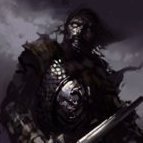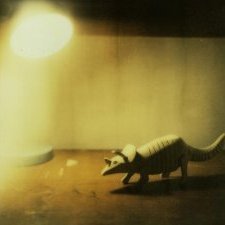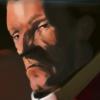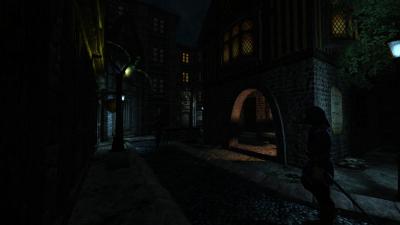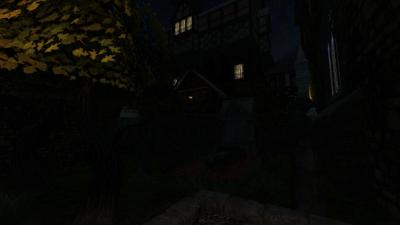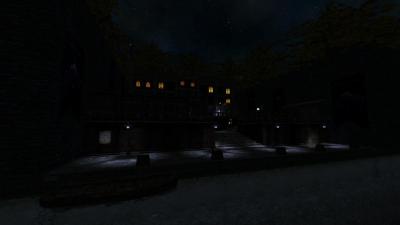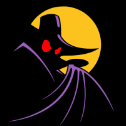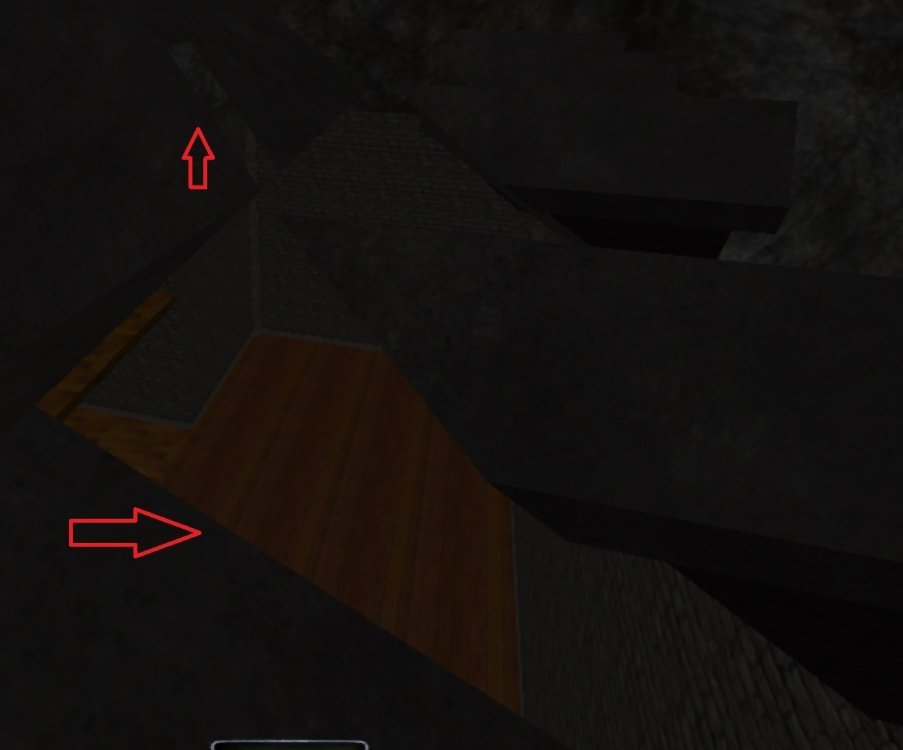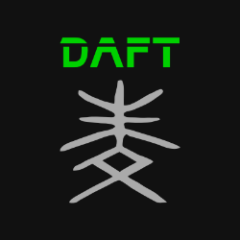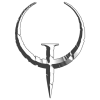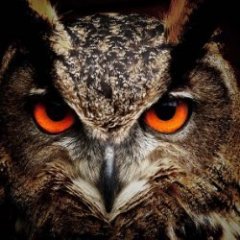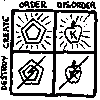Search the Community
Searched results for '/tags/forums/resolution/' or tags 'forums/resolution/q=/tags/forums/resolution/&'.
-
http://forums.thedarkmod.com/topic/19886-fm-marsh-of-rahena-beta-testing Anyone want to betatest a horror fm?
-
OK I think I've got to the bottom of this. I've created this forum thread (with bug report): https://forums.thedarkmod.com/index.php?/topic/22221-bug-drowning-ai-in-shallow-water/ I can apply a workaround, although it won't be perfect and the bug itself needs fixing in the engine. There are a few other things that need fixing so will put an update together soonish.
-
If any mappers have encountered weirdness with kill objectives not working with drowning AI, I think I've found out why. I don't think it would be a particularly difficult one to fix either. I've raised this bug report: https://bugs.thedarkmod.com/view.php?id=6323 Some context here: https://forums.thedarkmod.com/index.php?/topic/21837-fan-mission-the-lieutenant-2-high-expectations-by-frost_salamander-20230424/&do=findComment&comment=487316 I think this is a bug, but just raising here in case some people think otherwise.
-
Changelog of 2.11 development: beta211-08 (rev 16770-10264) * Fixed crash when minimizing TDM on Windows (post). * Added HD carpets (thread). * Fixed player getting delayed and lower damage on high fall ending with mantle (6231). * Removed wrong LOD stage in atdm:env_ragdoll_commoner_female. * Reverted addition of default "map of" inventory item. * Made it easier for modders to substitute invgrid parchment background (6241). beta211-07 (rev 16758-10258) * Fixed extinguished candles stim-lighting each other on game start (6223). * Added menu settings for sheathe toggle, and changed default (6232 thread). * Saint Lucia mission improvements (thread). * Fixed GUI warnings in New Job. * Renamed "New Missions" to "Missions List" in main menu (6230). * Fixed initial difficulty highlight on Objectives screen (6229). * Fixed Objectives title slightly cut off on low text scale (6234). * Added mansion01 window assets (6235). * Fixed normal map of turquoise_uneven (6222). * Allow user to tweak pm_noclipspeed (6237). beta211-06 (rev 16739-10248) * Saint Lucia mission improvements (thread). * Fixed rare crash during melee combat (6225). * Fixed func_peek crash on Linux (5553). * Fixed bottle crash in "Pearls and Swine" (6227). * Fixed textures of cheapbeermug (post). * Fixed warnings in book_ornate_gothic readables (post). * Fixed minor issue in broad phase of collision detection. beta211-05 (rev 16727-10239) * Fixed rare NaN blocks from volumetric lights on AMD driver (post). * Fixed rare thin holes in geometry on low "render scale". * Fixed major performance regression in "r_shadowMapSinglePass 1" mode. * Added subtitles to New Job mission (5914). * Fixed subtitles hidden during CameraView type of cutscene (6197). * Fixed last character of subtitles occasionally clipped away (5914). * Fixed missed alert count if player hides into darkness during guard's combat startup (6211). * Added blueprint assets by Dram. * Fixed UV map in bwindow01_frame model (6217). * Allow female guards to sleep on floor (6208). * Dmap messages about PlanarGraph and EarCut now include 3D world position. * Some minor rounding changes in text placement in GUI. * Restored value of pm_bobup from 2.10. beta211-04 (rev 16714-10226) * Fixed wrong lightgem values briefly after game load/start (6088). * Fixed alert counter for civilians immediate alert (5286). * Some main menu text made translatable (2960). * New assets: Precursor "ancient" loot by Kingsal, galleon wreck, gothic cabinet, grandfather clock with new clock scriptobject, pagan menir (standing stone statue), pair of large marble lion statues, feather duster prop * Make sure all newly created door entities have the right rotate value set (5051) * Fix missing normalmap for audiograph, fixed shadowmesh for armchair_victorian_02.ase * Various small asset fixes (missing faces in LOD stage of boiler02_med.lwo, mangled stairs in galleon.lwo, gaps in spade models, normals on desk2 and desk3 models, UV issues on various other models) (3771). * Improved resolution for shield_goldarms texture (4894). * Added "looping" keyword to looping clock ticking sounds. * Exclude female pagan materials from release builds. beta211-03 (rev 16689-10219) * Avoid copying of large array on AMD, fixing a terrible performance regression (thread). * Enabled Frontend Acceleration = r_useParallelAddModels by default. * Fixed error when same decl file exists packed and unpacked with different case (post). * Don't crash TDM if automation port is occupied: warn, retry, and disable instead (thread). * New Job: the mission is no longer unfinishable if you guess the safe combination without visiting the Lord's room + visportal fixes. * Ambient world prefab: expanded light radius from 1K to 10K. * Added currency pack, cobblestone pack, furniture pack and tiling treasure hoard texture * Added wall mounted locks, improved sofa and leather ottoman * Added star wallpaper * Block CMake build without setting build type (post), fixed CMake + MSVC build. beta211-02 (rev 16670-10208) * Fixed bugs with counting number of alerts (5286, 6186). * Fixed bugs in in-game and savegame screenshots (link). * Disable GL debug groups to fix performance on some AMD drivers. * Added a lot of new assets from Epifire's missions (6188). * Added and refactored locks/safes by Obsttorte, Epifire, Dragofer. * Added book skins by Wellingtoncrab. * Fixed missing wastebasket material in Hazard Pay (link). * Support r_skipAmbient and r_skipInteractions in new backend. * Added spawnarg call_used_action_script on frobable movers. * Fixed definitions of ambient lights with normal-dependent color (6090). * Fixed KOBoxSize not being restored for the sake of blackjack. beta211-01 (rev 16656-10189) * Many improvements in new volumetric lights implementation + added cvars (5850, thread). * r_softShadowsMipmaps: fixed render scale, fixed screenshots. * Faster shadow volume generation with BVH, more cvars and tweaking (5886). * Optimized stencil shadows: turbo shadow vertices are static on GPU. * Improved solidness / visibility logic on models (6175). * Added spawnargs allow_idle_anims and allow_random_headturning. * Avoid sound amplification due to negative sound loss spawnarg (5913). * Fixed weird glitch on game load (6149). * Removed one frame of latency from "com_smp 0" mode (5875). dev16650-10157 * Volumetric lights reimplemented: dither pattern removed, performance improved (5850). * Added audiograph entity and assets. * Fixed shader compilation with r_softShadowsMipmaps on some Linux AMD GPUs (post). * Fixed bug in new frobstage_xxx material macros (5427). * Massive frobstages refactoring in materials: new macros are used now (5427). * Trace model: limits increased and refactoring (5887). * Massive cleaning of prefabs, automaton station script fix (6013). * Fixed rotten_paper_nancy_hand GUI in world view. * Perfume bottle model uses smooth shading, lampion skin fixes. * Some cleanup: idRenderMatrix memory alignment, face planes in SEED model clone, Elbrus FFmpeg compile fix, old shaders disabled. dev16629-10139 * Added implicit generation of frobstages and simple customization macros (5427, thread). * Added support for OBJ models (thread). * Fixed chandelier_gas4 model (6125), improved wooden chest prefab sounds (4206). * Optimized silhouette preprocessing during model loading. dev16625-10132 * "Light from above" behavior applies only to lights of ambient_world type (6090). * Major changes in normal-dependent ambient shading (6090). * Optimized FixGlobalTJunctions in dmap, restored vertex grid snapping (6085). * Updated "Tears of Saint Lucia" mission with EFX and other fixes (thread). * Replaced algorithm for assigning shadow maps resolution. * Fixed a brief wrong frame with X-ray (6109). * Added getCurInvItemCount script function (6096). * Fixed old rendering backend. * Slightly better culling due to fixed depth bounds computation. * Added textures/darkmod/window/metal_irregularpanes_moonlit_bright (6119). dev16617-10107 * Major changes in ambient/interaction shaders for more consistency (5828, thread). * Major changes in blackjack knockout behavior (4289 thread). * Optimized stencil shadows with antialiasing by using scissors (5851). * Stencil shadow shadows tile-based culling optimization (6076 thread). * Added wiki article (link) about Tracy timeline profiler; thread names fix, print version. * More asset changes to fix warnings, added "load all assets" test maps (6019). * Added teleportArea command, which allows to find area by number (6083). * Refactored ambient interaction shader, deleted unused ambientRimColor (5828). * Fixed overflow crash in idAASBuild::GetFaceForPortal. * Enabled GL debug groups by default, fixed borderless FBO mismatch warnings. * Added transparent grate textures (6089). * Fixed textures/common/mirror. Known issues: * ambientCubicMap broken yet, will be restored in future (6090). * Visual look has changed, mostly with stronger specular. dev16599-10071 * Fixed startup error on: Night to Remember, Cole Hurst 1 Eaton (5845). * Shadow maps refactoring: now volumetrics work if stencil shadows are selected (5880, post). * Fixed SSAO on new AMD driver (post). * Ensured that mission decls silently override same-named core decls (5766). * Fixed order of operations in expressions in materials and GUI scripts (6026). * GUI scripts: do not block autoupdate for window registers referenced in scripts; fixed vector component indexing, allow expressions on the right side of Set command (6028, thread). * Major refactor of objectives GUI: checkboxes no longer empty on failure screen (5852). * Added pm_mantle_tilt_mod cvar to tone down mantle movements. * Fixed noclip while shouldering a body (5244). * Fixed textures/skies/cubeSky material (5218). * Fixed items frobability in cabinet prefabs (6025). * Hundreds of fixes for core asset issues that were detected by a new systematic procedure. There should be far fewer broken assets and console warnings. Ongoing process (6019). * testmap command no longer sets developer mode, saving us from some warnings. * Started refactoring of interaction shaders (5828). dev16574-10036 * Add Dragofer's fully mapped ship prefabs, vintage lamps set, barouche carriage and camgoyle sentry turret with power source (4687) * Added BVH-based interaction culling for large meshes (5886, thread). * Added warnings for wrong GUI code, fixed them in core GUI (5869, thread). * Fixed leaning against non-axis-aligned door (5899). * Fixed skin of non-rotating security camera (6004). * Tweaked inlining and optimization, new debug builds Fast/Editable. * Disabled multiple rendercopies for warping materials (post). * Created materials for previously unreferenced textures, now available for use (5563, 5178) * Fixed 50 skin-related, auto-detected bugs that were generating console warnings (6019) * Female mage legs are now textured (5994) * Adjusted LOD offsets for atdm:nature_pine to avoid popping (3987) * Wooden torches now have burning/burnt tops (1293) * tdm_grass_clump and tdm_wildgrass particles no longer render fullbright (5689) * Added inclusion guards to all core script files (4427) * small_round_furnace_openable.pfb fixed with regards to model gaps and door origin (6018) * Fixed underwater_bubblesbubbles particle (5198) * Fixed burnt log end cap texture alignment (4896) * Added unlit and moonlit versions of textures/darkmod/window/ornate/round_spokes01 (5857) * Added specularmap to rivet_strip01 textures (5999) * Restored plain_robes skin for mages, pagan_orb_effect particle, fix windows in tudor building4 etc. (5690) * Fixed models that made use of missing materials (4390) * Diffusemap for wallpaper_ornamental_01_red now matches its normalmap (4798) * Hardwood materials now use wooden footstep sounds (4988) * Fixed skins for 6-candle chandeliers and nails (5900, 5217) * All fence_spike_01_tall models are now solid (6010) * Fixed typo in shouldered manbeast name (5877) dev16519-9985 * Now AIs think once per frame on low FPS when several game tics are modelled (5992). * More responsive crouch toggle (5973, thread). * Added "absence_alert_increase" as correct implementation of "absence_alert" (5987). * Allow drawing up to 4 postprocessing surfaces, as long as draw order is right (thread). * Missions can be sorted by date in in-game mission downloader. * Added getAnimRate/setAnimRate script events (540). * Fixed lean-peeking sound not always stopping when player goes away from door (5899). * Fixed wrong sounds of func_fracture after save/load (5363). * Fixed scorch and smear01 decals (5970). * Fixed fx/sparks effect, set "triggered 1" for newly added effects (5034). * Fixed startup image/sound warnings on some AIs (5993). * Fixed joints warnings on zombies (5466). * Fixed "screw" skin not showing in DR on appropriate models (5217). * Fixed for frobability in kitchen_cupboard_openable.pfb (5989). * Added editor images for panel_halfcircle_walnut and panel_vase_polished_walnut. * Bumped maximum number of edges to 1 million for stencil shadows, added overflow warning. * Fixed debug cvars tdm_ai_opt_forceopt and tdm_ai_opt_forcedormant 5992). * Tiny optimization: memcpy is now using streaming stores only at vertex cache. * Removed support of bindless textures (5891). * Extracted tdm_package and removed tdm_update source code (5076). dev16498-9944 * Updated Tracy library, hopefully fixed running on Windows 7 (post). * Fixed crash on loading save done while elemental is dying (5845). * Implemented multiloot on holding frob button (5984). * Crouched state does not affect player speed on ladder/rope (5961). * Crouch-toggle takes effect on keydown rather than release (5973). * Added setviewpos to screenshot filename (5819). * Show estimate for total number of pickpockets on end-mission screen (5678). * In-game downloader: show asterisk/sharp at the beginning (5842). * Trigger entities now work on AI which stands still (5319). * Added setObjectiveNotification, which allows to change objective silently (5967). * Added script functions to add/remove frob peers (5976). * AIs notice destroyed fracture entities (5978). * Enabled frobhelper by default (post). * Fixed some architecture skins by Nort. * Fix graffiti materials (5930). * Now default quicksave/quickload are F5/F9 (post). * Minor optimizations: SSE in idRenderMatrix, cache "drunk" spawnarg. * Looped bind does not cause crash, although behavior is undefined (post). Known problems: * Night to Remember, Cole Hurst 1 Eaton: cannot start missions due to hard error. * Painter's Wife: killing elemental should cause hard error (mission fixed). dev16487-9919 * Fixed saving/loading JPEG crash on Linux (5881). * Fixed wrong sound on strafe right (5554). * Major refactoring and optimization on LOD system, LOD entities no longer "think" (5944). * Improved time distribution of stims and LOD checks for more solid performance. * Optimized creation/destruction of script threads. * Optimized idClip = broad phase collision detection (5954). * Reduced size of Linux executable back from 24 MB to 18 MB by removing globals. * Now in-game downloader prints URL of download to game console. Known problems: * Won't boot on Windows 7 dev16485-9903 * Optimized iteration over active entities by switching from linked list to array. * Fixed bow sometimes not working on savegame load (5928). * Allow headbob cvar changes to persist between sessions (post). * Player speed modifiers (like pm_runmod) are no longer archived (post). * Applied Clang build fixes by @Partmedia (post). * Fixed "testVideo withAudio" command. * Fixed unbounded brush AAS warning by trying to process each edge of brush once (5648). * Use double precision for winding splits in dmap and collision. * Reworked FFmpeg player to not use deprecated functions, fixed protocol warning (5881). * Fixed 2GB overflow in printMemInfo. Known problems: * Won't boot on Windows 7 * JPEG saving and loading crashes on Linux. Setting r_screenshot_format to "png" may help... dev16481-9881 * Updated Visual C++ from 2017 to 2022, build game and idlib as on VC project (5820). * Updated all third-party libraries (5881). * Render scale does not affect main menu GUI. * Optimized compass rendering: don't copy depth buffer. * Fixed debug polygons not showing up. * Don't draw debug lines in subviews. * Don't open game console by tilde if com_allowConsole is 0 on Linux (post). * Moving GUI slider with mouse now results in discrete increments. * Restored code for 16-bit colors (via r_fboColorBits cvar only). * Game console bottom line gets thinner on smaller console font. * Added tuneDown command to quickly ender very low graphics mode. * Added r_fboScaling cvar which allows to change Render scale filtering to nearest. * Avoid purging/reloading all images on Alt+Tabbing in Windows. Known problems: * Won't boot on Windows 7 Changelog of earlier versions can be found here.
-
"might give some more performance" is quite the understatement. It is now achievable to get Iris to runs on the Steamdeck at 60fps, where as before most of the map was stuck between 30-40 regardless of settings, resolution scaling, etc. In terms of frame render times that is a much bigger performance jump than even 180-300. Really fantastic job devs! Now we can tank performance with even more elaborate and unoptimized scenes.
-
Changelog of 2.11 development: beta211-08 (rev 16770-10264) * Fixed crash when minimizing TDM on Windows (post). * Added HD carpets (thread). * Fixed player getting delayed and lower damage on high fall ending with mantle (6231). * Removed wrong LOD stage in atdm:env_ragdoll_commoner_female. * Reverted addition of default "map of" inventory item. * Made it easier for modders to substitute invgrid parchment background (6241). beta211-07 (rev 16758-10258) * Fixed extinguished candles stim-lighting each other on game start (6223). * Added menu settings for sheathe toggle, and changed default (6232 thread). * Saint Lucia mission improvements (thread). * Fixed GUI warnings in New Job. * Renamed "New Missions" to "Missions List" in main menu (6230). * Fixed initial difficulty highlight on Objectives screen (6229). * Fixed Objectives title slightly cut off on low text scale (6234). * Added mansion01 window assets (6235). * Fixed normal map of turquoise_uneven (6222). * Allow user to tweak pm_noclipspeed (6237). beta211-06 (rev 16739-10248) * Saint Lucia mission improvements (thread). * Fixed rare crash during melee combat (6225). * Fixed func_peek crash on Linux (5553). * Fixed bottle crash in "Pearls and Swine" (6227). * Fixed textures of cheapbeermug (post). * Fixed warnings in book_ornate_gothic readables (post). * Fixed minor issue in broad phase of collision detection. beta211-05 (rev 16727-10239) * Fixed rare NaN blocks from volumetric lights on AMD driver (post). * Fixed rare thin holes in geometry on low "render scale". * Fixed major performance regression in "r_shadowMapSinglePass 1" mode. * Added subtitles to New Job mission (5914). * Fixed subtitles hidden during CameraView type of cutscene (6197). * Fixed last character of subtitles occasionally clipped away (5914). * Fixed missed alert count if player hides into darkness during guard's combat startup (6211). * Added blueprint assets by Dram. * Fixed UV map in bwindow01_frame model (6217). * Allow female guards to sleep on floor (6208). * Dmap messages about PlanarGraph and EarCut now include 3D world position. * Some minor rounding changes in text placement in GUI. * Restored value of pm_bobup from 2.10. beta211-04 (rev 16714-10226) * Fixed wrong lightgem values briefly after game load/start (6088). * Fixed alert counter for civilians immediate alert (5286). * Some main menu text made translatable (2960). * New assets: Precursor "ancient" loot by Kingsal, galleon wreck, gothic cabinet, grandfather clock with new clock scriptobject, pagan menir (standing stone statue), pair of large marble lion statues, feather duster prop * Make sure all newly created door entities have the right rotate value set (5051) * Fix missing normalmap for audiograph, fixed shadowmesh for armchair_victorian_02.ase * Various small asset fixes (missing faces in LOD stage of boiler02_med.lwo, mangled stairs in galleon.lwo, gaps in spade models, normals on desk2 and desk3 models, UV issues on various other models) (3771). * Improved resolution for shield_goldarms texture (4894). * Added "looping" keyword to looping clock ticking sounds. * Exclude female pagan materials from release builds. beta211-03 (rev 16689-10219) * Avoid copying of large array on AMD, fixing a terrible performance regression (thread). * Enabled Frontend Acceleration = r_useParallelAddModels by default. * Fixed error when same decl file exists packed and unpacked with different case (post). * Don't crash TDM if automation port is occupied: warn, retry, and disable instead (thread). * New Job: the mission is no longer unfinishable if you guess the safe combination without visiting the Lord's room + visportal fixes. * Ambient world prefab: expanded light radius from 1K to 10K. * Added currency pack, cobblestone pack, furniture pack and tiling treasure hoard texture * Added wall mounted locks, improved sofa and leather ottoman * Added star wallpaper * Block CMake build without setting build type (post), fixed CMake + MSVC build. beta211-02 (rev 16670-10208) * Fixed bugs with counting number of alerts (5286, 6186). * Fixed bugs in in-game and savegame screenshots (link). * Disable GL debug groups to fix performance on some AMD drivers. * Added a lot of new assets from Epifire's missions (6188). * Added and refactored locks/safes by Obsttorte, Epifire, Dragofer. * Added book skins by Wellingtoncrab. * Fixed missing wastebasket material in Hazard Pay (link). * Support r_skipAmbient and r_skipInteractions in new backend. * Added spawnarg call_used_action_script on frobable movers. * Fixed definitions of ambient lights with normal-dependent color (6090). * Fixed KOBoxSize not being restored for the sake of blackjack. beta211-01 (rev 16656-10189) * Many improvements in new volumetric lights implementation + added cvars (5850, thread). * r_softShadowsMipmaps: fixed render scale, fixed screenshots. * Faster shadow volume generation with BVH, more cvars and tweaking (5886). * Optimized stencil shadows: turbo shadow vertices are static on GPU. * Improved solidness / visibility logic on models (6175). * Added spawnargs allow_idle_anims and allow_random_headturning. * Avoid sound amplification due to negative sound loss spawnarg (5913). * Fixed weird glitch on game load (6149). * Removed one frame of latency from "com_smp 0" mode (5875). dev16650-10157 * Volumetric lights reimplemented: dither pattern removed, performance improved (5850). * Added audiograph entity and assets. * Fixed shader compilation with r_softShadowsMipmaps on some Linux AMD GPUs (post). * Fixed bug in new frobstage_xxx material macros (5427). * Massive frobstages refactoring in materials: new macros are used now (5427). * Trace model: limits increased and refactoring (5887). * Massive cleaning of prefabs, automaton station script fix (6013). * Fixed rotten_paper_nancy_hand GUI in world view. * Perfume bottle model uses smooth shading, lampion skin fixes. * Some cleanup: idRenderMatrix memory alignment, face planes in SEED model clone, Elbrus FFmpeg compile fix, old shaders disabled. dev16629-10139 * Added implicit generation of frobstages and simple customization macros (5427, thread). * Added support for OBJ models (thread). * Fixed chandelier_gas4 model (6125), improved wooden chest prefab sounds (4206). * Optimized silhouette preprocessing during model loading. dev16625-10132 * "Light from above" behavior applies only to lights of ambient_world type (6090). * Major changes in normal-dependent ambient shading (6090). * Optimized FixGlobalTJunctions in dmap, restored vertex grid snapping (6085). * Updated "Tears of Saint Lucia" mission with EFX and other fixes (thread). * Replaced algorithm for assigning shadow maps resolution. * Fixed a brief wrong frame with X-ray (6109). * Added getCurInvItemCount script function (6096). * Fixed old rendering backend. * Slightly better culling due to fixed depth bounds computation. * Added textures/darkmod/window/metal_irregularpanes_moonlit_bright (6119). dev16617-10107 * Major changes in ambient/interaction shaders for more consistency (5828, thread). * Major changes in blackjack knockout behavior (4289 thread). * Optimized stencil shadows with antialiasing by using scissors (5851). * Stencil shadow shadows tile-based culling optimization (6076 thread). * Added wiki article (link) about Tracy timeline profiler; thread names fix, print version. * More asset changes to fix warnings, added "load all assets" test maps (6019). * Added teleportArea command, which allows to find area by number (6083). * Refactored ambient interaction shader, deleted unused ambientRimColor (5828). * Fixed overflow crash in idAASBuild::GetFaceForPortal. * Enabled GL debug groups by default, fixed borderless FBO mismatch warnings. * Added transparent grate textures (6089). * Fixed textures/common/mirror. Known issues: * ambientCubicMap broken yet, will be restored in future (6090). * Visual look has changed, mostly with stronger specular. dev16599-10071 * Fixed startup error on: Night to Remember, Cole Hurst 1 Eaton (5845). * Shadow maps refactoring: now volumetrics work if stencil shadows are selected (5880, post). * Fixed SSAO on new AMD driver (post). * Ensured that mission decls silently override same-named core decls (5766). * Fixed order of operations in expressions in materials and GUI scripts (6026). * GUI scripts: do not block autoupdate for window registers referenced in scripts; fixed vector component indexing, allow expressions on the right side of Set command (6028, thread). * Major refactor of objectives GUI: checkboxes no longer empty on failure screen (5852). * Added pm_mantle_tilt_mod cvar to tone down mantle movements. * Fixed noclip while shouldering a body (5244). * Fixed textures/skies/cubeSky material (5218). * Fixed items frobability in cabinet prefabs (6025). * Hundreds of fixes for core asset issues that were detected by a new systematic procedure. There should be far fewer broken assets and console warnings. Ongoing process (6019). * testmap command no longer sets developer mode, saving us from some warnings. * Started refactoring of interaction shaders (5828). dev16574-10036 * Add Dragofer's fully mapped ship prefabs, vintage lamps set, barouche carriage and camgoyle sentry turret with power source (4687) * Added BVH-based interaction culling for large meshes (5886, thread). * Added warnings for wrong GUI code, fixed them in core GUI (5869, thread). * Fixed leaning against non-axis-aligned door (5899). * Fixed skin of non-rotating security camera (6004). * Tweaked inlining and optimization, new debug builds Fast/Editable. * Disabled multiple rendercopies for warping materials (post). * Created materials for previously unreferenced textures, now available for use (5563, 5178) * Fixed 50 skin-related, auto-detected bugs that were generating console warnings (6019) * Female mage legs are now textured (5994) * Adjusted LOD offsets for atdm:nature_pine to avoid popping (3987) * Wooden torches now have burning/burnt tops (1293) * tdm_grass_clump and tdm_wildgrass particles no longer render fullbright (5689) * Added inclusion guards to all core script files (4427) * small_round_furnace_openable.pfb fixed with regards to model gaps and door origin (6018) * Fixed underwater_bubblesbubbles particle (5198) * Fixed burnt log end cap texture alignment (4896) * Added unlit and moonlit versions of textures/darkmod/window/ornate/round_spokes01 (5857) * Added specularmap to rivet_strip01 textures (5999) * Restored plain_robes skin for mages, pagan_orb_effect particle, fix windows in tudor building4 etc. (5690) * Fixed models that made use of missing materials (4390) * Diffusemap for wallpaper_ornamental_01_red now matches its normalmap (4798) * Hardwood materials now use wooden footstep sounds (4988) * Fixed skins for 6-candle chandeliers and nails (5900, 5217) * All fence_spike_01_tall models are now solid (6010) * Fixed typo in shouldered manbeast name (5877) dev16519-9985 * Now AIs think once per frame on low FPS when several game tics are modelled (5992). * More responsive crouch toggle (5973, thread). * Added "absence_alert_increase" as correct implementation of "absence_alert" (5987). * Allow drawing up to 4 postprocessing surfaces, as long as draw order is right (thread). * Missions can be sorted by date in in-game mission downloader. * Added getAnimRate/setAnimRate script events (540). * Fixed lean-peeking sound not always stopping when player goes away from door (5899). * Fixed wrong sounds of func_fracture after save/load (5363). * Fixed scorch and smear01 decals (5970). * Fixed fx/sparks effect, set "triggered 1" for newly added effects (5034). * Fixed startup image/sound warnings on some AIs (5993). * Fixed joints warnings on zombies (5466). * Fixed "screw" skin not showing in DR on appropriate models (5217). * Fixed for frobability in kitchen_cupboard_openable.pfb (5989). * Added editor images for panel_halfcircle_walnut and panel_vase_polished_walnut. * Bumped maximum number of edges to 1 million for stencil shadows, added overflow warning. * Fixed debug cvars tdm_ai_opt_forceopt and tdm_ai_opt_forcedormant 5992). * Tiny optimization: memcpy is now using streaming stores only at vertex cache. * Removed support of bindless textures (5891). * Extracted tdm_package and removed tdm_update source code (5076). dev16498-9944 * Updated Tracy library, hopefully fixed running on Windows 7 (post). * Fixed crash on loading save done while elemental is dying (5845). * Implemented multiloot on holding frob button (5984). * Crouched state does not affect player speed on ladder/rope (5961). * Crouch-toggle takes effect on keydown rather than release (5973). * Added setviewpos to screenshot filename (5819). * Show estimate for total number of pickpockets on end-mission screen (5678). * In-game downloader: show asterisk/sharp at the beginning (5842). * Trigger entities now work on AI which stands still (5319). * Added setObjectiveNotification, which allows to change objective silently (5967). * Added script functions to add/remove frob peers (5976). * AIs notice destroyed fracture entities (5978). * Enabled frobhelper by default (post). * Fixed some architecture skins by Nort. * Fix graffiti materials (5930). * Now default quicksave/quickload are F5/F9 (post). * Minor optimizations: SSE in idRenderMatrix, cache "drunk" spawnarg. * Looped bind does not cause crash, although behavior is undefined (post). Known problems: * Night to Remember, Cole Hurst 1 Eaton: cannot start missions due to hard error. * Painter's Wife: killing elemental should cause hard error (mission fixed). dev16487-9919 * Fixed saving/loading JPEG crash on Linux (5881). * Fixed wrong sound on strafe right (5554). * Major refactoring and optimization on LOD system, LOD entities no longer "think" (5944). * Improved time distribution of stims and LOD checks for more solid performance. * Optimized creation/destruction of script threads. * Optimized idClip = broad phase collision detection (5954). * Reduced size of Linux executable back from 24 MB to 18 MB by removing globals. * Now in-game downloader prints URL of download to game console. Known problems: * Won't boot on Windows 7 dev16485-9903 * Optimized iteration over active entities by switching from linked list to array. * Fixed bow sometimes not working on savegame load (5928). * Allow headbob cvar changes to persist between sessions (post). * Player speed modifiers (like pm_runmod) are no longer archived (post). * Applied Clang build fixes by @Partmedia (post). * Fixed "testVideo withAudio" command. * Fixed unbounded brush AAS warning by trying to process each edge of brush once (5648). * Use double precision for winding splits in dmap and collision. * Reworked FFmpeg player to not use deprecated functions, fixed protocol warning (5881). * Fixed 2GB overflow in printMemInfo. Known problems: * Won't boot on Windows 7 * JPEG saving and loading crashes on Linux. Setting r_screenshot_format to "png" may help... dev16481-9881 * Updated Visual C++ from 2017 to 2022, build game and idlib as on VC project (5820). * Updated all third-party libraries (5881). * Render scale does not affect main menu GUI. * Optimized compass rendering: don't copy depth buffer. * Fixed debug polygons not showing up. * Don't draw debug lines in subviews. * Don't open game console by tilde if com_allowConsole is 0 on Linux (post). * Moving GUI slider with mouse now results in discrete increments. * Restored code for 16-bit colors (via r_fboColorBits cvar only). * Game console bottom line gets thinner on smaller console font. * Added tuneDown command to quickly ender very low graphics mode. * Added r_fboScaling cvar which allows to change Render scale filtering to nearest. * Avoid purging/reloading all images on Alt+Tabbing in Windows. Known problems: * Won't boot on Windows 7 Changelog of earlier versions can be found here.
-
PLAYERS * Volumetric lights appeared late before the previous beta, so the quality of volumetrics in 2.10 was rather poor, and the dithering pattern was very annoying to look at. The feature received a lot more development, and now adheres to the standards of modern rendering. The dithering pattern is gone, performance should be much better, and now you won't miss volumetrics even if you prefer to play with stencil shadows all the time! (thread) * Thanks to a certain "AI-heavy" mission, the game code has received major optimizations. It is most noticeable in low performance conditions, when game modelling takes a lot of CPU time. Previously the game could easily descend into the "spiral of death" with FPS falling below 5, now it is way harder due to better scheduling of AI thinking. There is a variety of other game code optimizations which make our lives slightly better. * New version includes several optimizations for shadows, mostly stencil shadows. A long-standing inefficiency of stencil shadows with antialiasing is fixed, new tile-based optimization is added for soft stencil shadows (thread), small lights with large meshes work faster due to BVH efforts (thread). On the side of shadow maps, the rules for distributing the resolution budget are changed: small distant lights no longer steal precious bandwidth for themselves. * There are several improvements on gameplay side as well. The core mechanics of blackjacking enemies has received subtle, yet helpful improvements (thread). Now you can grab many close pieces of loot by holding down the frob button, instead of picking up each item individually. There are several improvements to crouching, making it more responsive (thanks to @Daft Mugi). The in-game downloader now supports "sort by release date" ordering. * There were a ton of small bugfixes for issues like: bow stuck after load, wrong strafe-walk sound, crash when saving shortly after the death of an elemental, melee combat crash, issues with leaning onto doors, missing fracture sounds after loading a save, X-ray glitch in the first frame, toggling solidity/visibility, lightgem on game load, etc. MAPPERS * The engine now supports OBJ model format. This format is much more popular than ASE and LWO. The engine loading code is very lightweight: it will use your model exactly is as, and load it very quickly. The OBJ format is preferred for large meshes due for faster loading times. The only possible downside is somewhat larger download size compared to LWO, although not much and not always (thread). * Renderer should deal with large meshes much faster, thanks to BVH optimizations. Recall that idTech4 was made for very low-poly models. When renderer frontend sees a "surface" in a model, it always treats this surface as an atomic piece, doing all computations for all of its vertices and triangles. This is very good for low-poly models, can heavily drag performance down with large meshes, as several recent missions noticed during beta. The BVH data structure breaks every surface into smaller chunks, allowing renderer to quickly cull away whole chunks. This makes a big difference in case of large meshes (e.g. terrain) lit by many small lights (thread). * You no longer have to write frob-highlight stages in materials, since they are added implicitly. The problem with these stages was that were very easy to forget, which resulted in no highlight on frobable items. Also it increased cognitive load and scared mappers away. While writing frobstages is no longer necessary, the old stages work just fine. So mappers can still customize frob-highlighting if they really want to (thread). * It is now legal to override a single decl of core game in your mission. Recall that "decl" means a material, a skin, an entityDef, a particle, etc. Note that overriding a whole file from core game always worked as expected, but overriding a single decl from a file did not work reliably before (despite the common belief that it should). * The major cleaning of shaders resulted in some changes in lighting model. The aim was to make TDM lighting closer to the standard Phong model, and make it more logical in general. The changes should rarely make a big difference, aside from probably stronger specular (thread). * Added error-reporting to the GUI scripting engine. Implementing GUI scripts is very hard, error-prone, and confusing. Aside from surprising differences in Doom 3 GUI behavior compared to e.g. Javascript in DOM, a lot of confusion was caused by total lack of any error handling whatsoever! In the new version, all possible errors should result in easy-to-understand console warnings, so writing correct GUI is much easier. Also, we fixed a few features, and added a few new ones to the GUI engine (thread). * dmap command received minor improvements. Yet another big rewrite happened for T-junctions fixing code, since it took tremendous amount of time on one mission. Also a few precision improvements were made. * Other small fixes and additions: added script functions getAnimRate / setAnimRate for tweaking animations added script function setObjectiveNotification for silent objective change added script function getCurInvItemCount for interaction with inventory added script variable "AI_ENEMY_TACTILE" to the base AI scriptobject, which is true whenever the AI is in tactile range of an enemy added spawnarg absence_alert_increase for loot items as a proper substitute for absence_alert, giving control over how much an AI gets alerted if that piece goes missing added spawnargs allow_idle_anims / allow_random_headturning for customization during a running mission, useful i.e. for cutscenes AIs notice broken fracture entities trigger_multiple now works on stationary AIs almost doubled tracemodel limits, raising the restrictive limits for making collision meshes for moveable items door movers can now call "used_action_script" whenever something like a key, lockpick or other item is used on them, if they have the spawnarg "call_used_action_script" "1". ASSETS * Many new assets from capable creators in our community have been incorporated into the core assets. These include: Loot assets: Detailed coins and ingots with accompanying lore. Link Ancient loot items suitable for museums, collectors and ancient sites, first seen in the Volta series. A tiling treasure hoard texture for those with unimagineable wealth. 6 detailed book skins including 3 that are lootable, a first for TDM. Link Security assets Highly detailed standing and wall safes - with or without an accompanying combination lock. Link The combination "safe lock" is now part of core assets and can be operated by either scrolling or frobbing. Mappers no longer need to track down this asset and include it with their FM files as a custom asset. Wall-mounted locks in the style of those commonly found in the original Thief games. Camgoyle sentry, a magical stone guardian based on the security camera shooting magical projectiles at the player, first seen in Written in Stone. The prefab also includes a power source pedestal. Link Fully useable audiograph for playing recorded sounds, first seen in the Accountant and Shadow of Northdale missions. A new full-featured scriptobject makes them easy to implement and control via spawnargs. Wiki Furniture assets Posh upholstered armchairs and sofas for the wealthiest nobles. Link A new high-detail grandfather clock with a working scriptobject and a mantle clock. Link A gothic-style cabinet. Link Office assets Including bundled stacks of paper, blueprints, a letter, crumpled paper, waste bins, an end table and an ornate table. Nautical assets Full-scale modular ship prefabs with interiors, allowing anyone to assemble a ship for a nautical mission in a matter of seconds. 1 merchant galleon and 2 smaller sailing ships are available. Link Link Link A large galleon ship wreck in 2 pieces for those sailors who have met an unfortunate end. Decorative assets An impressive multi-tiered wall fountain, first seen in the mansion in Noble Affairs. A new pair of marble lion statues. Link A standing stone menir with carved symbols on it, ideal for pagan missions. Link Stone pedestal with purple cloth for presenting valuable items. Textures High-resolution cobblestone textures for detailing the streets of TDM. Link Starry wallpaper. Lamps A set of 6 bronze vintage lamps has been added for particulary posh establishments. Link Thief-style charge post streetlamp. A new open-top carriage, the barouche. Link Miscellaneous other models, including: wall planter, 7 small "foliage" herbs, 2 mine carts, 6 shop signs, equippable feather duster and 5 decor plates * We fixed all loading warnings on all existing assets. This became possible after creating an automatic map generator which forces the engine to load all assets from every group. All the references to missing files are fixed too, which means a variety of assets have become available: Old noblewoman skin, plain mage robes skin, moor helmet, electrical arcs, stone window decals (5178), yellow banner skin (5563), wine barrel (Link), grass particles (5689), lampion lights and more graffiti decals. PROGRAMMING Under the hood, we updated third-party libraries, and moved to Visual Studio 2022. The "Debug With Inlines" configuration was split into "Debug Editable" (with hot-reload support) and "Debug Fast" (fastest debuggable). Marking the final step in transition to tdm_installer, the old tdm_update program is finally removed, with TDM packaging code extracted to standalone program.
- 263 replies
-
- 14
-

-
Hello, everyone! In this multi-part, comprehensive tutorial I will introduce you to a new light type that has been available in The Dark Mod since version 2.06, what it does, why you would want to use it and how to implement it in your Fan Missions. This tutorial is aimed at the intermediate mapper. Explanations of how to use DarkRadiant, write material files, etc. are outside of its scope. I will, however, aim to be thorough and explain the relevant concepts comprehensively. Let us begin by delineating the sections of the tutorial: Part 1 will walk you through four, distinct ways to add ambient light to a scene, the last way using irradiance environment maps (or IEMs). Lighting a scene with an IEM is considered image-based lighting. Explaining this concept is not in the scope of this tutorial; rather, we will compare and contrast our currently available methods with this new one. If you already understand the benefits IBL confers, you may consider this introductory section superfluous. Part 2 will review the current state of cubemap lights in TDM, brief you on capturing an environment cubemap inside TDM and note limitations you may run into. Three cubemap filtering applications will be introduced and reviewed. Part 3 will go into further detail of the types of inputs and outputs required by each program and give a walkthrough of the simplest way to get an irradiance map working in-game. Part 4 will guide you through two additional, different workflows of how to convert your cubemap to an irradiance map and unstitch it back to the six separate image files that the engine needs. Part 5 will conclude the tutorial with some considerations as to the scalability of the methods hitherto explained and will enumerate some good practices in creating IEMs. Typical scenes will be considered. Essential links and resources will be posted here and a succinct list of the steps and tools needed for each workflow will be summarized, for quick reference. Without further ado, let us begin. Part 1 Imagine the scene. You’ve just made a great environment for your map, you’ve got your geometry exactly how you want it… but there’s a problem. Nobody can appreciate your efforts if they can’t see anything! [Fig. 1] This will be the test scene for the rest of our tutorial — I would tell you to “get acquainted with it” but it’s rather hard to, at the moment. The Dark Mod is a game where the interplay between light and shadow is of great importance. Placing lights is designing gameplay. In this example scene, a corridor with two windows, I have decided to place 3 lights for the player to stealth his way around. Two lights from the windows streak down across the floor and a third, placeholder light for a fixture later to be added, is shining behind me, at one end of the corridor. Strictly speaking, this is sufficient for gameplay in my case. It is plainly obvious, however, that the scene looks bad, incomplete. “Gameplay” lights aside, the rest of the environment is pitch black. This is undesirable for two reasons. It looks wrong. In real life, lights bounce off surfaces and diffuse in all directions. This diffused, omni-directional lighting is called ambient lighting and its emitment can be termed irradiance. You may contrast this with directional lighting radiating from a point, which is called point lighting and its emitment — radiance. One can argue that ambient lighting sells the realism of a scene. Be that as it may, suppose we disregard scary, real-life optics and set concerns of “realism” aside… It’s bad gameplay. Being in darkness is a positive for the player avatar, but looking at darkness is a negative for the player, themselves. They need to differentiate obstacles and objects in the environment to move their avatar. Our current light level makes the scene illegible. The eye strain involved in reading the environment in these light conditions may well give your player a headache, figurative and literal, and greatly distract them from enjoying your level. This tutorial assumes you use DarkRadiant or are at least aware of idtech4’s light types. From my earlier explanation, you can see the parallels between the real life point/ambient light dichotomy and the aptly named “point” and “ambient” light types that you can use in the editor. For further review, you can consult our wiki. Seeing as how there is a danger in confusing the terms here, I will hereafter refer to real life ambient light as “irradiant light”, to differentiate it from the TDM ambient lights, which are our engine’s practical implementation of the optical phenomenon. A similar distinction between “radiant light” and point lights will be made for the same reason. Back to our problem. Knowing, now, that most all your scenes should have irradiant light in addition to radiant light, let’s try (and fail, instructionally) to fix up our gloomy corridor. [Fig. 2] The easiest and ugliest solution: ambient lights. Atdm:ambient_world is a game entity that is basically an ambient light with no falloff, modifiable by the location system. One of the first things we all do when starting a new map is putting an ambient_world in it. In the above image, the darkness problem is solved by raising the ambient light level using ambient_world (or via an info_location entity). Practically every Dark Mod mission solves its darkness problem1 like this. Entirely relying on the global ambient light, however, is far from ideal and I argue that it solves neither of our two, aforementioned problems. Ambient_world provides irradiant light and you may further modulate its color and brightness per location. However, said color and brightness are constant across the entire scene. This is neither realistic, nor does it reduce eye strain. It only makes the scene marginally more legible. Let’s abandon this uniform lighting approach and try a different solution that’s more scene-specific. [Fig. 3] Non-uniform, but has unintended consequences. Our global ambient now down to a negligible level, the next logical approach would be hand-placed ambient lights with falloff, like ambient_biground. Two are placed here, supplementing our window point lights. Combining ambient and point lights may not be standard TDM practice, but multiple idtech4 tutorials extol the virtues of this method. I, myself, have used it in King of Diamonds. For instance, in the Parkins residence, the red room with the fireplace has ambient lights coupled to both the electric light and the fire flame. They color the shadows and enrich the scene, and they get toggled alongside their parent (point) lights, whenever they change state (extinguished/relit). This is markedly better than before, but to be honest anything is, and you may notice some unintended side-effects. The AI I’ve placed in the middle of the ambient light’s volume gets omnidirectionally illuminated far more than any of the walls, by virtue of how light projection in the engine works. Moving the ambient lights’ centers closer to the windows would alleviate this, but would introduce another issue — the wall would get lit on the other side as well. Ambient lights don’t cast shadows, meaning they go through walls. You could solve this by creating custom ambient light projection textures, but at this point we are three ad hocs in and this is getting needlessly complicated. I concede that this method has limited use cases but illuminating big spaces that AI can move through, like our corridor, isn’t one of them. Let’s move on. [Fig. 4] More directional, but looks off. I have personally been using this method in my WIP maps a lot. For development (vs. release), I even recommend it. A point light instead of an ambient light is used here. The texture is either “biground1” or “defaultpointlight” (the latter here). The light does not cast shadows, and its light origin is set at one side of the corridor, illuminating it at an angle. This solves the problem of omnidirectional illumination for props or AI in the middle of the light volume, you can now see that the AI is lit from the back rather than from all sides. In addition, the point light provides that which the ambient one cannot, namely specular and normal interaction, two very important features that help our players read the environment better. This is about as good as you can get but there are still some niggling problems. The scene still looks too monochromatic and dark. From experience, I can tell you that this method looks good in certain scenes, but this is clearly not one of them. Sure, we can use two, non-shadowcasting point lights instead of one, aligned to our windows like in the previous example, we can even artfully combine local and global ambient lights to furnish the scene further, but by this point we will have multiple light entities placed, which is unwieldy to work with and possibly detrimental to performance. Another problem is that a point light’s movable light origin helps combat ambient omnidirectionality, but its projection texture still illuminates things the strongest in the middle of its volume. I have made multiple experiments with editing the Z-projection falloff texture of these lights and the results have all left me unsatisfied. It just does not look right. A final, more intellectual criticism against this method is that this does not, in a technical sense, supply irradiant light. Nothing here is diffuse, this is just radiant light pretending the best it can. [Fig. 5] The irradiance map method provides the best looking solution to imbuing your scene with an ambient glow. This is the corridor lit with irradiance map lights, a new lighting method introduced in The Dark Mod 2.06. Note the subtle gradients on the left wall and the bounced, orange light on the right column. Note the agreeable light on the AI. Comparing the previous methods and this, it is plainly obvious that an irradiance environment map looks the most realistic and defines the environment far better than any of the other solutions. Why exactly does this image look better than the others? You can inform yourself on image-based lighting and the nature of diffuse irradiance, but images speak louder than words. As you can see, the fact of the matter is that the effect, subtle as it may be, substantially improves the realism of the scene, at least compared to the methods previously available to us. Procuring irradiance environment maps for use in lighting your level will hereafter be the chief subject of this tutorial. The next part will review environment cubemap capture in TDM, the makeIrradiance keyword and three external applications that you can use to convert a TDM cubemap into an irradiance map. 1 “ Note that the color buffer is cleared to black: Doom3 world is naturally pitch black since there is no "ambient" light: In order to be visible a surface/polygon must interact. with a light. This explains why Doom3 was so dark ! “ [source] Part 2 Cubemaps are not new to The Dark Mod. The skybox materials in some of our prefabs are cubemaps, some glass and polished tile materials use cubemaps to fake reflections for cheap. Cubemap lights, however, are comparatively new. The wiki page linked earlier describes these two, new light types that were added in TDM 2.05. cubicLight is a shadow-casting light with true spherical falloff. An example of such a light can be found in the core files, “lights/cubic/tdm_lampshade_cubic”. ambientCubicLight is the light type we will be focusing on. Prior to TDM 2.06, it acted as a movable, on-demand reflection dispenser, making surfaces in its radius reflect a pre-set cubemap, much like glass. After 2.06, the old behavior was discarded and ambientCubicLight was converted to accept industry standard irradiance environment maps. Irradiance environment maps (IEMs) are what we want to make, so perhaps the first thing to make clear is that they aren’t really “handmade”. An IEM is the output of a filtering process (convolution) which requires an input in the form of a regular environment cubemap. In other words, if we want to make an IEM, we need a regular cubemap, ideally one depicting our environment — in this case, the corridor. I say a snapshot of the environment is ideal for lighting it because this emulates how irradiant light in the real world works. All radiating surfaces are recorded in our cubemap, our ambient optic array as it were, then blurred, or convoluted, to approximate light scatter and diffusion, then the in-game light “shines” this approximation of irradiant light back to the surfaces. There is a bit of a “chicken and the egg” situation here, if your scene is dark to begin with, wouldn’t you just get a dark irradiance map and accomplish nothing? In the captured cubemap faces in Fig. 6, you may notice that the environment looks different than what I’ve shown so far. I used two ambient lights to brighten up the windows for a better final irradiance result. I’ve “primed the pump”, so to speak. You can ignore this conundrum for the moment, ways to set up your scenes for better results, or priming the pump correctly, will be discussed at the end of the tutorial. Capturing the Environment The wiki has a tutorial on capturing cubemaps by angua, but it is woefully out of date. Let me run you through the process for 2.07 really briefly. To start with, I fly to approx. the center of the corridor with noclip. I then type “envshot t 256” in the console. This outputs six .tga images in the <root>/env folder, simply named “t”, sized 256x256 px and constituting the six sides of a cube and depicting the entire environment. This is how they look in the folder: [Fig. 6] The six cube faces in the folder. Of note here is that I do not need to switch to a 640x480 resolution, neither do I need to rename these files, they can already be used in an ambientCubicLight. Setting Up the Lights For brevity’s sake, I’ll skip explaining material definitions, if you’ve ever added a custom texture to your map, you know how to do this. Suffice it to say, it is much the same with custom lights. In your <root>/materials/my_cool_cubemaps.mtr file, you should have something like this: lights/ambientcube/my_test_IEM_light { ambientCubicLight { forceHighQuality //cameraCubeMap makeIrradiance(env/t) cameraCubeMap env/t colored zeroClamp } } We’ll play with the commented out line in just a bit. Firstly, let’s place the actual light in DarkRadiant. It’s as simple as creating a new light or two and setting them up in much the same way you would a regular ambient light. I select the appropriate light texture from the list, “my_test_IEM_light” in the “ambientcube” subfolder and I leave the light colored pure white. [Fig. 7] The corridor in DR, top view, with the ambient cubic lights highlighted. I can place one that fills the volume or two that stagger the effect somewhat. Remember that these lights still have a spherical falloff. Preference and experimentation will prove what looks best to you. Please note that what the material we defined does is load a cubemap while we established that ambientCubicLights only work with irradiance maps. Let’s see if this causes any problems in-game. I save the map and run it in game to see the results. If I already have TDM running, I type “reloadDecls” in the console to reload my material files and “reloadImages” to reload the .tga images in the /env folder. [Fig. 8] Well this looks completely wrong, big surprise. Wouldn’t you know it, putting a cubemap in the place of an irradiance map doesn’t quite work. Everything in the scene, especially the AI, looks to be bathed in slick oil. Even if a material doesn’t have a specular map, it won’t matter, the ambientCubicLight will produce specular reflections like this. Let’s compare how our cubemap .tga files compares with the IEM .tgas we’ll have by the end of the tutorial: [Fig. 9] t_back.tga is the back face of the environment cubemap, tIEM_back.tga is the back face of the irradiance map derived from it. As you can see, the IEM image looks very different. If I were to use “env/tIEM” instead of “env/t” in the material definition above, I would get the proper result, as seen in the last screenshot of part 1. So it is that we need a properly filtered IEM for our lights to work correctly. Speaking of that mtr def though, let’s not invoke an irradiance map we haven’t learned to convert yet. Let’s try an automatic, in-engine way to convert cubemaps to IEMs, namely the makeIrradiance material keyword. makeIrradiance and Its Limitations Let’s uncomment the sixth line in that definition and comment out the seventh. cameraCubeMap makeIrradiance(env/t) //cameraCubeMap env/t Here is a picture of how a cubemap ran through the makeIrradiance keyword looks like: [Fig. 10] Say ‘Hi’ to our friend in the back, the normalmap test cylinder. It’s a custom texture I’ve made to demonstrate cubemap interactions in a clean way. Hey now, this looks pretty nice! The scene is a bit greener than before, but you may even argue it looks more pleasing to the eyes. Unfortunately, the devil is in the details. Let’s compare the makeIrradiance keyword’s output with the custom made irradiance map setup seen at the end of part 1. [Fig. 11, 12] A closer look at the brick texture reveals that the undesired specular highlighting is still present. The normal map test cylinder confirms that the reason for this is the noisy output of the makeIrradiance keyword. The in-engine conversion is algorithmic, more specifically, it doesn't allow us to directly compare .tga files like we did above. Were we able to, however, I'm sure the makeIrradiance IEM would look grainy and rough compared to the smooth gradient of the IEM you’ll have by the end of this tutorial. The makeIrradiance keyword is good for quick testing but it won’t allow you fine control over your irradiance map. If we want the light to look proper, we need a dedicated cubemap filtering software. A Review of Cubemap Filtering Software Here I’ll introduce three programs you can produce an irradiance map with. In the coming parts, I will present you with a guide for working with each one of them. I should also note that installing all of these is trivial, so I’ll skip that instructional step when describing their workflows. I will not relay you any ad copy, as you can already read it on these programs’ websites. I’ll just list the advantages and disadvantages that concern us. Lys https://www.knaldtech.com/lys/ Advantages: Good UI, rich image manipulation options, working radiance/specular map filtering with multiple convolution algorithms. Disadvantages: $50 price tag, limited import/export options, only available on Windows 64-bit systems. cmftStudio https://github.com/dariomanesku/cmftStudio Advantages: Available on Windows, OSX and Linux, free, open source software, command line interface available. Disadvantages: Somewhat confusing UI, limited import options, missing features (radiance/specular map filtering is broken, fullscreen doesn’t work), 32-bit binaries need to be built from source (I will provide a 32-bit Windows executable at the end of the tutorial). Modified CubeMapGen https://seblagarde.wordpress.com/2012/06/10/amd-cubemapgen-for-physically-based-rendering/ Advantages: Free software, quickest to work with (clarified later). Disadvantages: Bad UI, only Windows binaries available, subpar IEM export due to bad image adjustment options. Let’s take a break at this point and come back to these programs in part 3. A lot of caveats need to be expounded on as to which of these three is the “best” software for making an irradiance map for our purposes. Neither of these programs has a discreet workflow; rather, the workflow will include or exclude certain additional programs and steps depending on which app you choose to work with. It will dovetail and be similar in all cases. Part 3 The aim of this tutorial is twofold. First, it aims to provide the most hands-free and time-efficient method of converting an envshot, environment cubemap to an IEM and getting it working in-game. The second is using as few applications as possible and keeping them all free software that is available for download, much like TDM itself. The tutorial was originally going to only cover IEM production through Lys, as that was the app I used to test the whole process with. I soon realized that it would be inconsiderate of me to suggest you buy a fifty dollar product for a single step in a process that adds comparatively little to the value of a FM, if we’re being honest (if you asked me, the community would benefit far more from a level design tutorial than a technical one like this, but hey, maybe later, I’m filling a niche right now that nobody else has filled). This led me to seek out open-source alternatives to Lys, such as Cubemapgen, which I knew of and cmftStudio, which I did not. I will preempt my own explanations and tell you right away that, in my opinion, cmftStudio is the program you should use for IEM creation. This comes with one big caveat, however, which I’m about to get into. Six Faces on a Cross and The Photoshop Problem Let’s review. Taking an envshot in-game gives you six separate images that are game-ready. Meaning, you get six, split cubemap faces as an output, you need six, split irradiance map faces as an input. This is a problem, because neither Lys nor cmftStudio accept a sequence of images as such. They need to be stitched together in a cube cross, a single image of the unwrapped cube, like this: [Fig. 13] From Lys. Our cubemap has been stitched into a cross and the “Debug Cube Map Face Position” option has been checked, showing the orientations of each face. In Lys only panoramas, sphere maps and cube maps can be loaded into the program. The first two do not concern us, the third specifically refers to a single image file. Therefore, to import a TDM envshot into Lys you need to stitch your cubemap into a cross. Furthermore, Lys’ export also outputs a cubemap cross, therefore you also need to unstitch the cubemap into its faces afterwards if you want to use it in TDM. In cmftStudio you can import single map faces! Well… no, you can’t. The readme on GitHub boasts “Input and output types: cubemap, cube cross, latlong, face list, horizontal and vertical strip.” but this is false. The UI will not allow you to select multiple files on import, rendering the “face list” input type impossible.2 Therefore, to import a TDM envshot into cmftStudio you need to stitch your cubemap into a cross. Fortunately, the “face list” export type does work! Therefore, you don’t need to unstitch the cubemap manually, cmftStudio will export individual faces for you. In both of these cases, then, you need a cubemap cross. For this tutorial I will use Adobe Photoshop, a commercial piece of software, to stitch our faces into a cubemap in an automated fashion (using Photoshop’s Actions). This is the big caveat to using cmftStudio, even if you do not want to buy Lys, PS is still a prerequisite for working with both programs. There are, of course, open source alternatives to Photoshop, such as GIMP, but it is specifically Photoshop’s Action functionality that will power these workflows. GIMP has its own Actions in the form of Macros, but they are written with python. GIMP is not a software suite that I use, neither is python a language I am proficient with. Out of deference for those who don’t have, or like working with, Photoshop, I will later go through the steps I take inside the image editor in some detail, in order for the studious reader to reconstruct them, if they so desire, in their image editing software of choice. At any rate, and at the risk of sounding a little presumptuous, I take it that, as creative types, most of you already have Photoshop on your computers. 2 An asterisk regarding the “impossibility” of this. cmftStudio is a GUI for cmft, a command line interface that does the same stuff but inside a command prompt. I need to stress that I am certain multiple faces can be inputted in the command line, but messing with unwieldy prompts or writing batch files is neither time-saving nor user-friendly. This tutorial is aimed at the average mapper, but a coder might find the versatility offered in cmft interesting. The Cubemapgen Workflow You will have noticed that I purposefully omitted Cubemapgen from the previous discussion. This is because working with Cubemapgen, wonderfully, does not need Photoshop to be involved! Cubemapgen both accepts individual cubemap faces as input and exports individual irradiance map faces as output. Why, then, did I even waste your time with all the talk of Lys, cmftStudio and Photoshop? Well, woefully, Cubemapgen’s irradiance maps look poor at worst and inconsistent at best. Comparing IEMs exported from Lys and cmftStudio, you will see that both look practically the same, which is good! An IEM exported from Cubemapgen, by default, is far too desaturated and the confusing UI does not help in bringing it to parity with the other two programs. If you work solely with Cubemapgen, you won’t even know what ‘parity’ is, since you won’t have a standard to compare to. [Fig. 14] A comparison between the same irradiance map face, exported with the different apps at their respective, default settings. Brightened and enlarged for legibility. This may not bother you and I concede that it is a small price to pay for those not interested in working with Photoshop. The Cubemapgen workflow is so easy to describe that I will in fact do just that, now. After I do so, however, I will argue that it flies in the face of one of the aims of this tutorial, namely: efficiency. Step 1: Load the cubemap faces into Cubemapgen. Returning to specifics, you will remember that we have, at the moment, six .tga cubemap faces in a folder that we want to convert to six irradiance map faces. With Cubemapgen open, direct your attention to these buttons: [Fig. 15] You can load a cubemap face by pressing the corresponding button or using the hotkey ‘F’. To ensure the image faces the correct way, you must load it in the corresponding “slot”, from the Select Cubemap Face dropdown menu above, or by pressing the 1-6 number keys on your keyboard. Here is a helpful list: X+ Face <1> corresponds to *_right X- Face <2> corresponds to *_left Y+ Face <3> corresponds to *_up Y- Face <4> corresponds to *_down Z+ Face <5> corresponds to *_forward Z- Face <6> corresponds to *_back ...with the asterisk representing the name of your cubemap. With enough practice, you can get quite proficient in loading cubemap faces using keyboard shortcuts. Note that the ‘Skybox’ option in the blue panel is checked, I recommend you use it. Step 2: Generate the Irradiance Map [Fig. 16] The corridor environment cubemap loaded in and filtered to an irradiance map. The options on the right are my attempt to get the IEM to look right, though they are by no means prescriptive. Generating an IEM with Modified CubeMapGen 1.66 is as easy as checking the ‘Irradiance cubemap’ checkbox and hitting ‘Filter Cubemap’ in the red panel. There are numerous other options there, but most will have no effect with the checkbox on. For more information, consult the Sébastien Lagarde blog post that you got the app from. I leave it to you to experiment with the input and output gamma sliders, you really have no set standard on how your irradiance map is supposed to look, so unfortunately you’ll have to eyeball it and rely on trial and error. Two things are important to note. The ‘Output Cube Size’ box in the red panel is the resolution that you want your IEM to export to. In the yellow panel, make sure you set the output as RGB rather than RGBA! We don’t need alpha channels in our images. Step 3: Export Irradiance Map Faces Back in the green panel, click the ‘Save CubeMap to Images’ button. Save the images as .tga with a descriptive name. [Fig. 17] The exported irradiance map faces in the folder. These files still need to be renamed with appropriate suffixes in order to constitute a readable cubemap for the engine. The nomenclature is the same as the table above: “c00” is the X+ Face, to be renamed “right”, “c01” is the X- Face and so on. Right left, up down, forward and back. That’s the order! This is all there is to this workflow. A “cameraCubeMap env/testshot” in the light material will give us a result that will look, at the very least, better than the inbuilt makeIrradiance material keyword. [Fig. 17] The map ended up being a little bright. Feel free to open Fig. 4 and this in seperate tabs and compare the Lys/cmft export with the cubemapgen one. A Review of the Workflow Time for the promised criticism to this workflow. I already stated my distaste for the lack of a standardised set of filtering values with this method. The lack of any kind of preset system for saving the values you like makes working with Cubemapgen even more slipshod. Additionally, in part 2, I said that Cubemapgen is the fastest to work with, but this needs to be qualified. What we just did was convert one cubemap to an irradiance map, but a typical game level ought to use more than a single IEM. Premeditation and capturing fake, “generic” environment cubemaps (e.g. setting up a “blue light on the right, orange on the left” room or a “bright skylight above, brown floor” room, then capturing them with envshot) might allow for some judicious reuse and keep your distinct IEM light definition count down to single digits, but you can only go so far with that. I am not arguing here for an ambient cubic light in every scene either, certainly only those that you deem need the extra attention, or those for which the regular lighting methods enumerated in Part 1 do not quite work. I do tentatively assume, though, that for an average level you would use between one and two dozen distinct IEMs. Keep in mind that commercial games, with their automated probe systems for capturing environment shots, use many, many more than that. With about 20 cubemaps to be converted and 6 faces each to load into Cubemapgen, you’ll be going through the same motions 120 whole times (saving and renaming not included). If you decide to do this in one sitting (and you should, as Cubemapgen, to reiterate, does not keep settings between sessions), you are in for a very tedious process that, while effective, is not very efficient. The simple fact is that loading six things one by one is just slower than loading a single thing once! The “single thing” I’m referring to is, of course, the single, stitched cubemap cross texture. In the next part, I will go into detail regarding how to make a cubemap cross in Photoshop in preparation for cmftStudio and Lys. It will initially seem a far more time-consuming process to you than the Cubemapgen workflow, but through the magic of automation and the Actions feature, you will be able to accomplish the cubemap stitch process in as little as a drag-and-drop into PS and a single click. The best thing is that after we go through the steps, you won’t have to recreate them yourself, as I will provide you with a custom Actions .atn file and save you the effort. I advise you not to skip the explanations, however. The keen-eyed among you may have noticed that you can also load a cube cross in Cubemapgen. If you want to use both Cubemapgen and Photoshop together to automate your Cubemapgen workflow, be aware that Cubemap gen takes crosses that have a different orientation than the ones Lys and cmftStudio use. My macros (actions) are designed for the latter, so if you want to adjust them for Cubemapgen you would do well to study my steps and modify them appropriately. For the moment, you’ve been given the barebones essentials needed to capture an envshot, convert it to an irradiance map and put it in your level at an appropriate location, all without needing a single piece of proprietary software. You can stop here and start cranking out irradiance maps to your heart’s content, but if you’re in the mood for some more serious automation, consider the next section.
-
Author note: It's hard to believe it's already been a year since Act 1 came out! Well during this mission the player will be following Corbin into the Grimwood district to followup on a lead from last night (Act 1) .. the mysterious tablet! This mission is my first time including full EFX support as well as a HD briefing video file, additionally a new script has been added crafted by the talented Obsttorte which has loot flying towards the player when you pick it up. On a level design front I have tried to change things up a bit by really catering towards a number of play styles, this mission can be completely ghosted or you can use the tools at your disposal to wreak havoc on the citizens of Northdale. For the first time I have tried to create more sandbox environments which don't offer clear answers handed directly to you, so if you're having trouble figuring something out try a different method. This mission takes between 1 - 2 hours to finish depending on the difficulty you play on and how thoroughly you explore. I hope you enjoy your night in Northdale! - Goldwell Voice actors Fen Phoenix Goldwell Random_taffer Yandros Beta testers Amadeus Boiler's Hiss Cambridge Spy Chakkman Crowind Epifire Kingsal SquadaFroinx Custom Assets Andreas Rocha DrK Epifire Grayman Kingsal MalachiAD Obsttorte Sotha Springheel SquadaFroinx Purgator With special thanks to Epifire for creating a large collection of custom models, Grayman for helping out with coding, Kingsal for drawing the ingame map and Moonbo for his script revision on the briefing video. Available via in-game downloader MIRROR File Size: 417 mb EDIT: If you are having performance issues please consult this post by Nbohr1more which may address your issue http://forums.thedarkmod.com/topic/19936-fan-mission-shadows-of-northdale-act-ii-by-goldwell-20190320/page-2?do=findComment&comment=436271
-
https://www.moddb.com/mods/the-dark-mod/videos/the-way-to-black-heart-manor It looks like the original video might be lost or very buried, but here's some details for it. Posted September 9, 2008 6:43 duration 720x576 resolution "The Way To Black Heart Manor" TDM_BLACKHEART.avi Just kidding, it works on ModDB, the first browser I tried didn't load it. https://cdn.dbolical.com/cache/videos/mods/1/4/4000/encode720p_mp4/TDM_BLACKHEART.avi.mp4 I downloaded. >100 MB, a bloated re-encode of the ~50 MB original. Same 720x576 res.
-
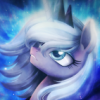
Occlusion culling using world geometry
MirceaKitsune replied to MirceaKitsune's topic in The Dark Mod
I was just thinking if a conventional depth pass may also do the trick: Render world geometry as an untextured unlit Z-buffer at a small cheap resolution (eg: 256x128 default)... knowing each entity's distance from the camera, an entity is discarded when its projection doesn't touch at least one pixel darker / further than its own location. Could that work? Something worth noting: If you own a relatively modern video card (last 5 years or so) and use an 1080p @ 60 Hz monitor, you may get the maximum performance... even that requires lower quality settings (absolutely no MSAA) but now it's possible to get a constant round 60 FPS. The big problem is playing on either a 4k or 144 Hz screen and hoping to reach anywhere near your VSync limit, god forbid both at once. Most of us don't want more pixels in our monitor so 1920x1080 is still the expected standard, unless we have TDM players who play on a large TV which wouldn't surprise me. Yet we are going for 144 Hz... once you get used to it and can't go back, anything under 120 FPS starts to feel like you're lagging. At the moment I get +80 FPS in most areas, +100 in some, +120 very rarely when I'm lucky... the full 144 only if I'm literally staring at a wall and of course in the main menu. -
Hello TDM-ers. I am encountering an issue where textures seem to partially disappear. I tried searching the forums, but, I don't know what to search for. The missing textures are a worldspawn brush acting as a roof with {for now} flat iron texture. There are other worldspawn brushes right below to create an attic ceiling with roof framework board texture. These gaps appeared a few edits ago. I can't "undo" to get back before whatever edit did this. The gaps are only visible during play and are not visible during editing. Closing and reopening DR and TDM do not fix anything. Some of the brushes overlap in areas behind the play area but I have never seen an issue doing that. The attached image has the effect I am now seeing. Ideas on where to start debugging this? Very much appreciated. Clint
-
(I apologize for the odd poll question layout. I wasn't able to add five yes-no questions, because polls are limited to three questions.) Hi everyone, I've recently been working on some patches for issues that I've read about from players on the TDM and TTLG forums — and Discord. My goal is to make it as easy as possible for players, especially new players and those who need usability/accessibility options, to find what they need in order to have a better TDM experience. I've already written the GUI and game engine code for these settings, which I've been using in my personal build. The reason for this poll and discussion is to both guide the finalization of my work and collect data to help inform the dev team. Which patches I submit depend on the outcome of this poll, discussion, and what the dev team agrees to accept. Once decided, I can coordinate with the dev team. I've attached screenshots of what the new settings menu would look like if all of the settings are accepted. Below, I have detailed each menu setting, so you can have an easier time understanding each one. Very important to keep in mind: None of these settings change TDM default behavior. They are all opt-in. If you are already happy with the behavior of 2.10, 2.11, etc. and these menu settings are accepted, nothing will change for you. Rename "Always Run" to "Run Mode" with options "None, Always, Toggle" After 2.11 was released, @i30817 requested that "toggle run" be added to the settings menu. Its cvar is already in TDM as "in_toggleRun" (same as Doom 3). I propose renaming the "Always Run" setting to "Run Mode" with options: "None", "Always", and "Toggle". None = in_alwaysRun 0; in_toggleRun 0 Always = in_alwaysRun 1; in_toggleRun 0 Toggle = in_alwaysRun 0; in_toggleRun 1 Show Blackjack Helper @Wellingtoncrab suggested that the new blackjack helper be added to the settings menu. Its cvar was added to 2.11 as "tdm_blackjack_indicate". More info: It's the new blackjack helper added to 2.11. When the game detects that the blackjack can be used for a successful hit or KO, the blackjack will rise slightly. I propose a "Yes/No" setting for this. Slider for "View: Head Bob" @ChronA requested a way to disable head bobbing, because a viewer watching him play was having severe motion sickness. Also, there was a bug in TDM that made setting the head bob in the console not stick after loading a saved game. (Even with 2.11, if a mission overrides the "tdm_player_thief.def" file and sets "pm_bobroll", "pm_bobpitch", "pm_bobup", and other cvars, it will override player preferences.) As far back as 2008, players have had trouble setting head bob. Another one from 2018. At the end of 2022, @Shadowex3 registered just to voice the need for a way to control head bob. I propose that a slider be added to adjust the amount of head bob. This would use a new "pm_headbob_mod" cvar with a value between 0.0 and 1.0 (default 1.0, no change). The "pm_headbob_mod" would be a multiplier for "pm_bobroll", "pm_bobpitch", and "pm_bobup". The advantage to this approach is that missions like Volta 2 and Hazard Pay would not need to adjust their "tdm_player_thief.def" files for head bob to work properly. And, the player can still adjust "pm_bobroll", "pm_bobpitch", and "pm_bobup" as they like. Slider for "View: Mantle Roll" This is similar to head bob for those who are sensitive to motion. Its cvar was added to 2.11 as "pm_mantle_roll_mod". A Thief player on Discord said, "2.11 will have a cvar to tune down the mantling animation at last." I propose that a slider be added for "pm_mantle_roll_mod". Auto-Search Bodies @Zaratul requested the "auto-search bodies" feature from Thief 1 & 2. Its cvar was added to 2.12 dev16783-10307 as "tdm_autosearch_bodies". I did a poll on the a Thief Discord server and roughly 20% of players there use the Thief auto-search bodies feature. I propose a menu setting for this, so that players coming from Thief 1 & 2 can easily find it.
-

[Feature discussion] Depth of Field effect
MirceaKitsune replied to MirceaKitsune's topic in The Dark Mod
Personally I think it's unrealistic if it's overdone: It needs to represent not what a camera lens sees but what a person's eyes will, albeit that's different for individuals like people who wear glasses. Anyone can however notice that if you put a finger in front of your eyes then focus either on it or the background the other will become blurry: I don't think that's a bad effect to simulate, which would be both realistic and good looking... for our environments especially I think it would look incredible. It's very much a thing of taste though. Like I said I don't think it should be enabled by default, heck I'd be fine with it even as a hidden cvar I can put in my autoexec.cfg (seems frob highlight ended up like that). If so few others like this effect enough to want to work on it though, I may have to try it myself at some point; Wonder if someone could at least help with the code part so I could try doing the dynamic shader myself based on examples, plus confirm it would be accepted so I wouldn't work for nothing. Also do we still use ARB shaders? I thought we switched everything to GLSL years ago. Also curious if our shaders currently have access to the information needed to produce this effect, namely the Z buffer (grayscale depth pass). I wonder if using an independent resolution per area is possible though I strongly doubt it: I think it's an universal camera property, doubt it could be easily made to work per-pixel. It would be interesting since then it could also improve / recover some performance by rendering near / distant stuff at a smaller resolution? Is there anything left of that on the forum or elsewhere? Maybe it could help with a new implementation. -
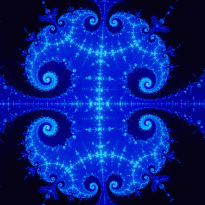
Beta testers wanted: The House of deLisle (by thebigh)
thebigh replied to thebigh's topic in Fan Missions
Awesome! Post is up! https://forums.thedarkmod.com/index.php?/topic/22200-beta-testing-the-house-of-delisle/#comment-487365 Thanks! -
Cauldron v2.0 is finally done! http://forums.thedarkmod.com/topic/19207-fan-mission-volta-ii-cauldron-of-the-gods-by-kingsal-113017-update-v20/
-
AMD isn't sandbagging the market and trolling customers as hard as NVidia, but if they were smart, they would have just kept the higher price of $300 and included 16GB of memory. This would have been an easy and epic KO, perhaps along with an advertising campaign about being for gamers who don't want smeared, low resolution textures. when all game development is stopped for PS4/Xbox One next year and developers have the freedom to crank quality up some more.
-
@datiswous @vozka I recently upgraded from my old geforce 1060 desktop to an azus rog strix scar something or other with a 12th Gen Intel(R) Core(TM) i9-12900H 2.50 GHz with 16.0 GB (15.7 GB usable) RAM and an Intel Geforce 1080Ti card of which I'm unsure of exact values but must be fairly high. I also upgraded to a 55 inch samsung 4K monitor. I instantly noticed a huge increase in brightness of my WIP. When using the 55 inch monitor I'm forced to a 1920 x 1080 resolution with no bells and whistles. No HDR. I haven't tried playing with the 55 inch monitor turned off and the strix scar in native mode. Noticing these huge differences for the first time I wonder what the best guideline would be for correcting lighting for all or most darkmod gameplay?
-
Hi guys, through the "cheats" topic I got the idea, that it would be quite useful, if there were tags for missions (the post was about removing the killing restriction in some missions to suit the prefered play style). I don't know how easy or difficult this is, but with them, it would be quite convenient to pick missions with playstyles, environment, etc one does want to use. This could also be expanded to other mission properties. I remember a discussion about climbable drains, handles on doors, that cannot be picked and other things the map author chooses for himself. That way these things would be clearer and as I said before, it is easier to choose missions with playstyles that suit oneself. What do think?
-
I recently purchased a used gaming laptop, model Terra 1590, reportedly something of a MSI Ghost derivative. Has a dedicated GTX970M video card, the monitor has full HD resolution. OS is Win10 Pro anniversary edition with the latest Nvidia drivers. Trouble is, I can't get it to use the native resolution. I can run it at 640x480, everything beyond that results in a distorted display, where I can only see the top left part of the "screen". Several searches came up blank, any suggestions?
-
We are sorta at a middle point between cutting edge games that use dynamic resolution scaling and traditional resolution management. (Someday) What I would want is a holy grail option of being able to use "integer scaling" so that you can have crisp square pixels for lower FBO resolutions but with AA pixels also scaled to exact integer ratio pixels. It should make lower FBO resolutions look native resolution on a low resolution large LCD screen. Of course you could also do what some modern emulators do and have off-kilter (non ratio) block-pixels use sub-pixel filtering at the block-pixel boundaries to ensure a mostly crisp look and smooth motion too. (Ultra holy grail ) That would be the ultimate solution and it is gaining popularity in the gaming community who have been pushing to make it available on the driver side but there is obviously a conflict of interest there. GPU sellers differentiate their tiers of hardware by what resolution they render to. If players can easily choose a lower resolution and get still get a crisp image it lowers the incentive to upgrade to the next hardware tier. It will take one vendor giving in and offering it to break the stalemate. Details about the current state of things: https://tanalin.com/en/articles/integer-scaling/
-
I am not sure but I believe that ReShade offers a temporal or morphological AA solution which might be much cheaper than using in-game MSAA. Given your high screen resolution, I am surprised that 8x MSAA isn't sufficient. One thing that MSAA doesn't cover is shader aliasing and transparency so cranking up to 16x won't help there. If ReShade doesn't have the needed options, you can also try forcing AA in your Nvidia driver settings. People complain about the blurry nature of FXAA but with really high pixel DPI it should have minimal degradation to image clarity. Try setting MSAA to 4x and forcing FXAA for transparency coverage and see if the results are acceptable. Depending on your aptitude with ReShade settings you might prefer it's SSAO and lighting mods... but I will humbly submit that you can improve the sense of scene depth with my own Fresnel Mod: https://www.moddb.com/mods/the-dark-mod/addons/fresnel-mod-211-unofficial Also you can achieve something similar to the ReShade HDR by modifying the r_postprocess cvars : https://wiki.thedarkmod.com/index.php?title=Advanced_TDM_Visuals_Tweaking Setting r_postprocess_colorCurveBias to something like 0.2 or 0.25 should make the game look more like your ReShade screens but obviously ReShade has many more customization options for color behavior so you have more control there ( with some additional expense due to increased shader parameters ). Note: Some options from that article are gone in favor of a newer bloom implementation controlled by r_bloom settings.
-
can somebody fix the mainpage of our site? http://forums.thedarkmod.com/topic/19469-new-layout-error/
-
Experimenting with TDM on Steam Link on Android. see topic http://forums.thedarkmod.com/topic/19432-tdm-on-steam-link-for-android/
-

Fan Mission: By Any Other Name by joebarnin (2022/3/10)
JavaGod replied to joebarnin's topic in Fan Missions
Getting hit by the green or white does nothing, no fading, nothing. they just pass through me. Same thing with the previous puzzle - the green balls do nothing - just pass through me. No teleport, no fading, nada. Hope that helps! I have stopped playing your FM until I get a resolution as the puzzles are too fun! Don't want to cheat to finish them. Thanks!


